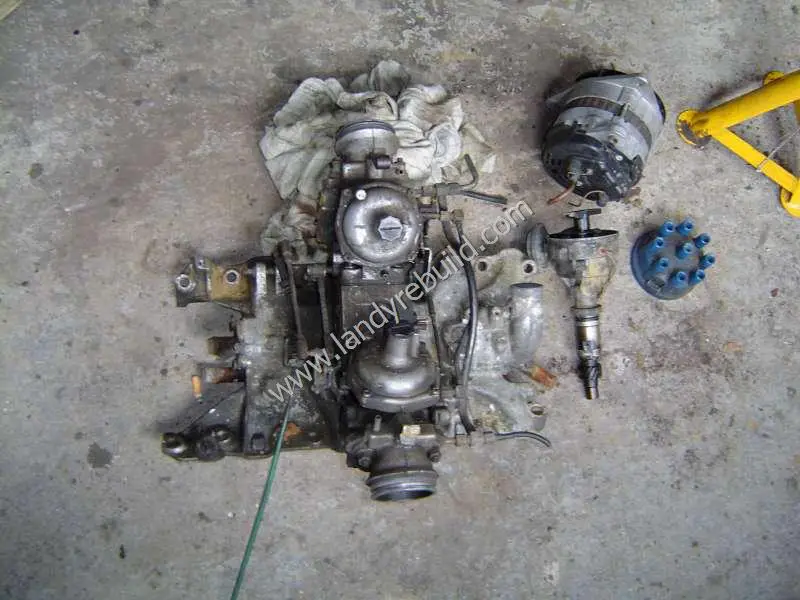With everything connected, I switched on the ignition, and was rewarded with the sound of the fuel pump kicking into life. I thought I'd make one final check in the engine bay before turning the key fully to start the engine. And it's just as well I did. Fuel was pouring out from the bottom of each carburettor. The float bowl seals had perished, which I believe is a common problem on these SU carburettors.
Seal kits for these are available, but the prospect of stripping down the carburettors was something which did not exactly fill me with joy.
Fortunately some time ago a neighbour had scrapped a Range Rover V8 and given me some parts; including an alternator, a distributor, and a complete inlet manifold with a pair of carburettors. These were Zenith Solex 175CD, and are completely interchangeable with the SU types. They are also reputed to be somewhat more reliable.
To remove the carburettors, the workshop manual advises that all the linkages and pipes are removed first. Unfortunately this is the case; the carburettors cannot be removed without doing this (I tried).
Each carburettor has four nuts attaching it to the inlet manifold. The upper two are fairly easy to remove.
The problem lies with the two lower nuts on each carburettor. The extremely limited access means you can't fit a socket on there. Although you can fit a spanner on these nuts, you can't turn it, because there is insufficient room between the carburettor body and the cylinder head cover. I was getting to the stage where I thought I would have to use a hammer and punch in order to turn the nut, but sanity prevailed and I took one of my older spanners and cut it in half. The reduced length of the spanner enabled me to remove these troublesome nuts!
With everything back together, throttle linkages replaced, and all the fuel pipes reconnected, I finally switched on the ignition and turned the key. I was rewarded with the sound of the engine turning over. I didn't expect it to start first time, and, of course, it didn't. During a pause to allow the battery to recover some of its strength, I heard the sound of splashing water from the front. I climbed out to investigate, and found a large puddle of coolant slowly spreading around the underneath of the engine bay. The water pump seal had failed.
Once I had retrieved the keys from the furthest recesses of the garage where they had landed, I packed up work for the day.
